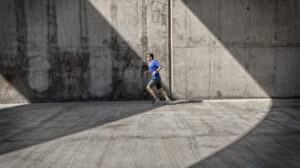The Olympic Games in Paris have begun and we will once again be invited to watch the world’s best athletes take part in many different sports, which require not only total concentration on the goal at hand, but also an excellent physical condition. Amongst us, it is always at the Olympics that the moments of athletics and swimming – whether synchronised or freestyle – stand out. Moments that are etched in our memory for the incredible performances of the athletes who took part in them.
Who will forget the moment when Voula Patoulidou became an Olympic gold medalist in Barcelona in the 110-meter hurdles, bringing Greece its first gold medal in athletics since 1912? Who doesn’t remember Usain Bolt’s explosive sprint at the London 2012 Olympics in the 100 metres that easily brought him gold. And what about Michael Phelps, the most successful and most decorated Olympian of all time in swimming with a total of 28 medals. Or his predecessor, Mark Spitz, who was America’s greatest swimmer, winning all seven events he competed in at the 1972 Munich Olympics, all in world record times. But what did all of the above great athletes have in common, other than the fact that they put their body and soul into making it into world sports history: an extraordinary physical condition.
Especially when it comes to the sports of running and swimming, we are always amazed at how fit the athletes who practice them are. That is why, after all, these two exercises are the two most popular forms of fitness chosen by billions of people around the world. Many people believe that nothing rejuvenates their body or exercises their muscles like the morning run and others believe in the body-beneficial ability of swimming. But which is ultimately the best, of the two, exercise for our bodies?
Taking a dip
Swimming is like a refreshing dip in the nirvana of fitness. Imagine exercising in a cool, serene environment where the water cushions your every movement. This exercise works almost every muscle group, from our arms and shoulders to our torso and legs. The buoyancy of the water means that our joints are protected from the bumps we encounter in other forms of exercise, making swimming an excellent choice for those with arthritis, joint pain or past injuries. What’s more, swimming can be incredibly versatile, as we can switch between different styles such as freestyle, backstroke, breaststroke and butterfly, each of which targets different muscle groups and keeps our workouts exciting.
The benefits of running
Running, on the other hand, is the kind of exercise that all you might need to do is a loyal pair, good sneakers – and maybe some good music for our ears. This exercise mainly targets our lower body, giving our quads, hamstrings, calves and glutes a strong workout. Running is also known for its cardiovascular benefits, greatly enhancing our heart and lung health, and is one of the most effective ways to burn calories -ideal if your goal is weight loss.
One of the greatest assets of running is its simplicity and accessibility. You don’t need a pool or a gym membership, just lace up your shoes and head out the door. Whether you’re jogging on city streets, sprinting on a track and field, or running in nature, there’s an undeniable sense of freedom and adventure. However, because it’s a high-impact activity for the body, running may not be suitable for people with a history of joint problems or injuries, as it can exacerbate conditions such as back pain, knee pain and stress fractures.
The verdict
The decision between swimming and running ultimately depends on your personal preferences, your goals and your fitness level. If you like the idea of a low-impact, full-body workout that feels like a mini vacation, swimming may be your best option. It’s protective for the joints and offers a cool, relaxing environment, which makes it particularly appealing in hot weather. If, on the other hand, you prefer a high-energy workout that burns calories easily and is convenient and flexible, running could be the most suitable workout.
The most important thing here, however, is not to overdo it and listen to your body, whether you’re swimming in the sea or pool, or running in the mountains or park. Remember that our guide should be ourselves. So don’t disregard the signs your body is giving you, such as minor aches and pains, no matter what kind of exercise you choose to do. Stay safe and skip that last lap at the track or pool if you feel it will push your personal limits. Remember that the goal is health, not to further stress your body.
Ask me anything
Explore related questions





